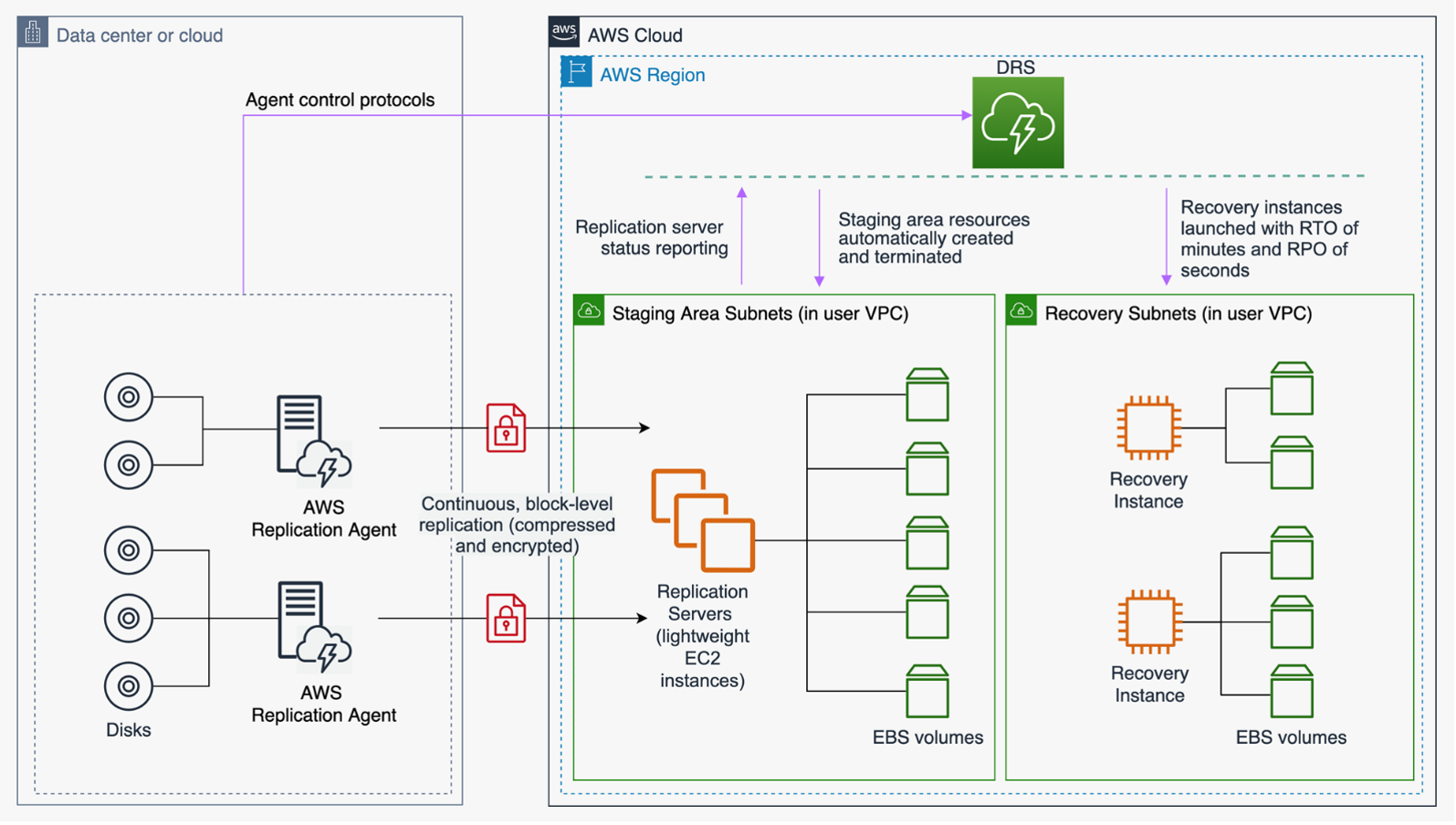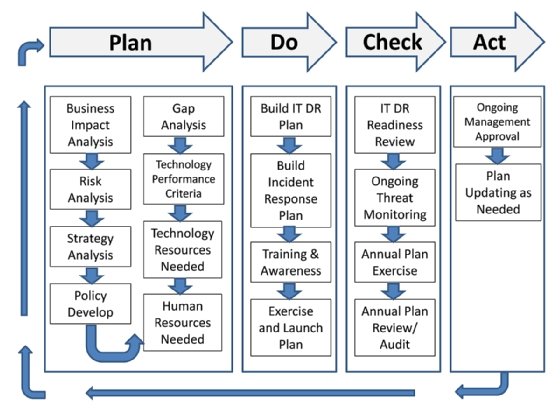Imagine losing all your critical business data in the blink of an eye. It’s a terrifying thought, isn’t it?
But what if I told you that you could prevent this nightmare with a smart strategy? Enter the world of disaster recovery plans in cloud computing. This isn’t just another tech buzzword; it’s your lifeline in the digital age. You might be wondering how this plan can protect your precious data.
Or perhaps you’re curious about how cloud computing plays a role. Don’t worry, you’re in the right place. We’ll unravel the secrets of crafting an effective disaster recovery plan using cloud technology. You’ll discover how to safeguard your business, keep your operations running smoothly, and, most importantly, ensure peace of mind. Ready to explore how you can turn a potential disaster into a minor hiccup? Let’s dive in.

Credit: www.geeksforgeeks.org
Benefits Of Cloud-based Disaster Recovery
Disaster recovery plans are crucial for business continuity. Cloud-based solutions offer immense benefits. They provide robust protection against data loss. Companies can recover quickly from unexpected events. Understanding these advantages can be vital for organizations.
Cost Efficiency
Cloud-based disaster recovery minimizes upfront costs. Traditional systems require significant hardware investment. Cloud solutions use a pay-as-you-go model. Businesses pay only for resources they use. This reduces financial strain and optimizes spending.
Scalability
Scalability is a key feature of cloud computing. It allows businesses to adjust resources easily. As needs change, scaling up or down is simple. This flexibility ensures optimal resource allocation. Companies can respond swiftly to varying demands.
Speed And Flexibility
Cloud-based recovery offers quick response times. Data can be restored rapidly after an incident. This minimizes downtime and disruption. Flexibility in deployment options enhances reliability. Organizations can choose tailored solutions for their needs.

Credit: docs.aws.amazon.com
Key Components Of A Disaster Recovery Plan
Creating a disaster recovery plan in cloud computing is vital. It ensures data security and business continuity during unexpected events. A well-structured plan consists of several key components. Each component plays a crucial role in safeguarding data and minimizing downtime. Let’s explore these essential elements.
Data Backup Strategies
Data backup is the cornerstone of any disaster recovery plan. It involves copying and storing data in a secure location. Regular backups prevent data loss and facilitate quick recovery. Choose a strategy that fits your business needs. Options include full backups, incremental backups, and differential backups. Cloud solutions offer automated backup processes. This reduces human error and ensures consistent data protection.
Recovery Time Objective (rto)
RTO defines the maximum acceptable downtime for business operations. It sets a target for how quickly systems should be restored. Shorter RTOs demand robust recovery solutions. Assess your business’s tolerance for downtime. This helps in determining the right RTO. Consider factors like customer impact and revenue loss. A well-defined RTO guides the development of effective recovery strategies.
Recovery Point Objective (rpo)
RPO specifies the amount of data loss your business can bear. It measures the frequency of data backups. A lower RPO means frequent backups and minimal data loss. Determine your business’s critical data needs. This helps in setting an appropriate RPO. Evaluate the cost of data loss against backup frequency. Align your RPO with your business continuity goals.
Choosing The Right Cloud Provider
Choosing the right cloud provider is crucial for a disaster recovery plan. The provider influences the security, compliance, and reliability of your data. This choice impacts how well you recover from disruptions.
Security Measures
Security is a top priority in cloud computing. Look for providers with strong encryption and firewall systems. Data should be protected both in transit and at rest. Regular security audits ensure ongoing protection. Providers should offer multi-factor authentication for access control.
Compliance Standards
Compliance standards are essential for meeting legal requirements. Choose providers that adhere to industry regulations. Look for certifications like ISO and SOC 2. These show commitment to maintaining compliance. Providers should support your specific business compliance needs.
Service Level Agreements (slas)
SLAs define the provider’s commitments to service quality. They specify uptime guarantees and response times. Review SLAs carefully to understand your rights. Ensure they align with your recovery needs. Clear SLAs help avoid unexpected downtime.

Credit: www.computerweekly.com
Implementing Disaster Recovery In The Cloud
Implementing Disaster Recovery in the Cloud offers a reliable solution for data protection. Cloud-based systems provide flexibility, scalability, and efficiency. They minimize downtime and ensure data security during disasters. A structured approach is essential for successful implementation. This involves setting up systems, testing them, and monitoring continuously.
Initial Setup
The initial setup is crucial for effective disaster recovery. Start by selecting a cloud service provider that meets your needs. Consider their reliability and security features. Next, identify critical data and applications that need protection. Create backups in multiple locations to ensure redundancy. Use encryption to safeguard sensitive information. Set up automated backup schedules to prevent data loss. Ensure that all stakeholders understand the recovery plan.
Testing And Validation
Testing and validation are vital for confirming system reliability. Regularly simulate disaster scenarios to test recovery procedures. Evaluate the speed and accuracy of data restoration. Identify any weaknesses or gaps in the recovery plan. Make necessary adjustments based on test results. Document all findings and improvements. Ensure that the system meets compliance standards.
Continuous Monitoring
Continuous monitoring keeps your disaster recovery system effective. Use monitoring tools to track performance and detect anomalies. Analyze system logs for unusual activity. Update software and hardware regularly to avoid vulnerabilities. Train staff on new technologies and protocols. Review and revise recovery plans periodically. Maintain open communication with your cloud provider. This ensures quick response during emergencies.
Challenges And Solutions
Disaster recovery in cloud computing faces several challenges. These challenges may seem daunting, but solutions exist. By understanding these hurdles, businesses can better prepare. Effective disaster recovery ensures business continuity. Let’s explore these challenges and their solutions.
Data Security Concerns
Data security is a top priority. Storing data in the cloud raises concerns. Unauthorized access is a risk. Businesses must protect sensitive information. Encryption is a strong solution. It safeguards data during transit and storage. Multi-factor authentication adds another layer of security. Regular security audits help identify vulnerabilities. Addressing these concerns is crucial for trust.
Bandwidth Limitations
Bandwidth affects data transfer speed. Large data volumes need efficient handling. Limited bandwidth can slow recovery efforts. Businesses should evaluate their bandwidth needs. Prioritize critical data transfers during recovery. Cloud providers may offer solutions. They can optimize data transfer processes. This ensures faster recovery times.
Cost Management
Cost management is essential in disaster recovery. Cloud services can be expensive. Businesses must balance cost and efficiency. Analyzing usage patterns helps manage expenses. Consider scalable solutions for flexibility. Pay-as-you-go models can reduce costs. Regularly review service plans. This ensures they meet business needs without overspending.
Best Practices For Cloud Disaster Recovery
Crafting a cloud disaster recovery plan involves prioritizing data security and backup strategies. Implementing regular data backups and testing recovery procedures ensures resilience. Monitoring systems for vulnerabilities aids in quick response during disruptions, safeguarding critical information and minimizing downtime.
Creating a robust cloud disaster recovery plan is essential for ensuring business continuity and data security. Without a well-structured plan, you risk losing crucial data during unexpected downtimes or cyber-attacks. Adopting best practices can help you create a reliable disaster recovery strategy that safeguards your cloud environment.
Regular Testing
Testing your disaster recovery plan regularly is key. Imagine driving a car without ever checking if the brakes work. Would you feel safe? Similarly, without regular testing, you can’t be certain your plan will hold up during an actual disaster. Schedule routine tests and drills to ensure all components of your recovery plan function correctly. Involve different teams to simulate real-life scenarios, identifying any potential weaknesses. This way, you’ll be prepared when it truly matters.
Documentation And Training
Proper documentation is your roadmap during a crisis. Ensure that every step of your disaster recovery process is clearly documented. This includes contact information, specific roles, and detailed recovery procedures. But documentation alone isn’t enough. Make sure your team is well-trained and familiar with the disaster recovery plan. Regular training sessions can empower your staff to act swiftly and confidently during an emergency.
Updates And Maintenance
A disaster recovery plan is not a set-it-and-forget-it strategy. Technology evolves, and so should your plan. Regularly update your plan to reflect any changes in your cloud environment or business needs. Perform consistent maintenance to keep your system optimized. This includes patching software vulnerabilities and upgrading hardware if necessary. Staying proactive ensures your disaster recovery plan remains effective and relevant. Have you ever faced a situation where your recovery plan didn’t go as expected? Reflecting on such experiences can offer valuable insights into areas needing improvement. By focusing on these best practices, you can enhance your cloud disaster recovery plan and protect your business from unforeseen disruptions.
Frequently Asked Questions
What Is A Disaster Recovery Plan In Cloud Computing?
A disaster recovery plan in cloud computing is a strategy. It ensures data recovery and system functionality after a disaster. This plan involves backing up data and applications in the cloud. It helps maintain business continuity and minimizes downtime.
Why Is Cloud Disaster Recovery Important?
Cloud disaster recovery is crucial for business continuity. It ensures data protection and quick recovery after disasters. This minimizes downtime and financial losses. Additionally, it offers flexibility, scalability, and cost-effectiveness. Businesses can adapt to changing needs and protect data efficiently.
How Does Cloud Disaster Recovery Work?
Cloud disaster recovery works by storing data offsite in the cloud. It involves regular backups and data replication. When a disaster occurs, the system restores data from these backups. This ensures minimal downtime and data loss, maintaining business operations seamlessly.
What Are The Key Benefits Of Cloud-based Recovery?
Cloud-based recovery offers several benefits. It provides cost-effective data protection and quick recovery solutions. It ensures scalability and flexibility to meet business needs. Additionally, it reduces downtime and minimizes data loss, enhancing business continuity. Cloud solutions are also easier to manage and update.
Conclusion
Cloud computing boosts disaster recovery effectiveness. It provides quick data restoration. Businesses save time and reduce risks. The flexibility of the cloud is vital. It adapts to changing needs. Costs are manageable with scalable options. No more expensive hardware. Security features protect sensitive data.
Regular updates keep systems current. Planning ensures business continuity. Teams should test plans regularly. It helps identify weak areas. Stay prepared for any disaster. Use cloud solutions for peace of mind. Prioritize data safety and business health. Investing in cloud disaster recovery is wise.
Embrace this technology for secure operations.





